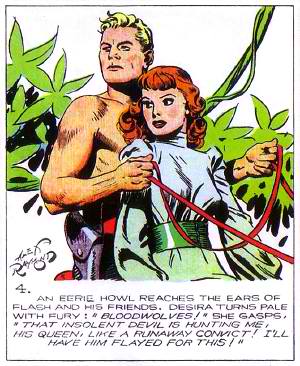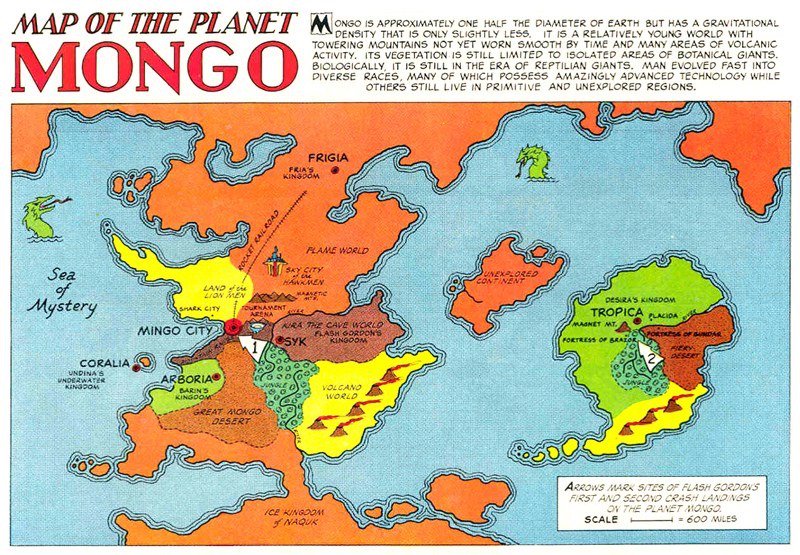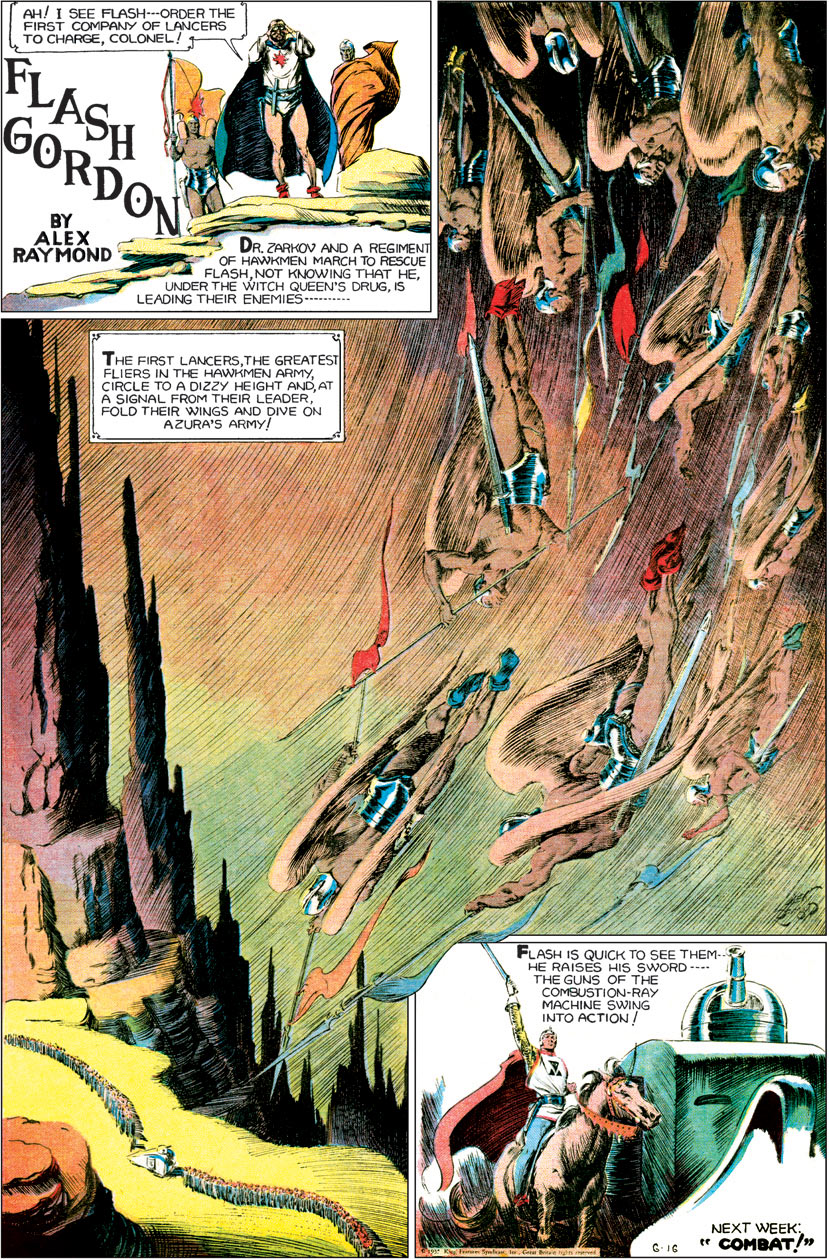In the summer of 1988 DC Comics was well along in the process to reinvent itself and attempting to shuffle of the rags of bygone eras. To that end they had devised a "Crisis" which pruned the sprawling DC Universe and gave opportunity to reinvent and update some of their iconic heroes. In that same spirit the company got its mitts on the King Features classic
Flash Gordon.
The task was handed to Dan Jurgens ably assited by inker Bruce Patterson. Jurgens has proven to be quite an auteur for DC over the decades, working as a one-man band of sorts writing and drawing some very high profile comics, and even inventing one of DC's most impressive newer characters -- Booser Gold.
The Flash Gordon franchise offered up great opportunity, but also great challenge. Clearly the editorial folks at DC, first Mike Gold and then John Greenberger wanted a leaner meaner Flash. The high romance of the classic Raymond comic strip couldn't be utterly abandoned, but in the 80's as the century queued up to close out, a grittier hero seemed of the moment.
Flash Gordon is a retired athlete, specifically an over-the-hill Boston Celtic, a man with an ex-wife and child who has found life to be not nearly as much fun as it once was. We meet him as he crashes his Ferarri, a man literally in a mid-life crisis.
He finds himself soon enough partnered with Dale Arden, a journalist and a crazy scientist named Zarkov who has invented a ship that travel to other dimensions. Of course they go there and find Mongo, a world ruled by a despot named Ming the Merciless. But this Ming is a little different, eschewing his "Yellow Peril" roots and presenting as just your run-of-the-mill nigh immortal megalomaniac. He is willing to kill and even genocide is just an afternoon's diversion.
Mongo is a world filled with Arborians, Hawkmen, Paquans (Lion Men), and Aquatics (Shark Men) among others. These are races specifically developed by genetic manipulation to fulfill the needs of Mongo society, one wracked by a lack of resources until Ming found a way allow all men and women to find a place. That place was one of abject servitude but there was a social balance which was held together by pitting the races against one another and the use of absolute cruelty to maintain control.
Into this brew Flash and Dale come and find themselves attacked and taken captive time and again. Ming seeks to kill Flash over an over again but always fails. Dale escapes his harem barely and she and Flash find a romance between them that takes time to kindle. And always there are the others such as the treacherous Princess Aura, the unreliable Prince Barin, and the gruff King Vultan. Allies along with Professor Zarkov returned from seeming death eventually work together to fight Ming.
The story is told from Flash's perspective and we discover that what is really going on is Flash is a man in a mid-life crisis who is slowly and grudgingly finding meaning again. One issue switches gears and tells the tale from Ming's perspective and while we don't get any sympathy for the devil we do at get some clarity as to his motives.
This is a story of
Flash Gordon that has a definite ending and I would be most remiss to say much more about it. I enjoyed the reading, though at this distance I found the story telling a little dated even given it was attempting update the scenario. With over thirty years having passed this story too has signs of age. But if you find it, it's an interesting spin on the Alex Raymond classic and worth time.
Rip Off
























_2.jpg)




























